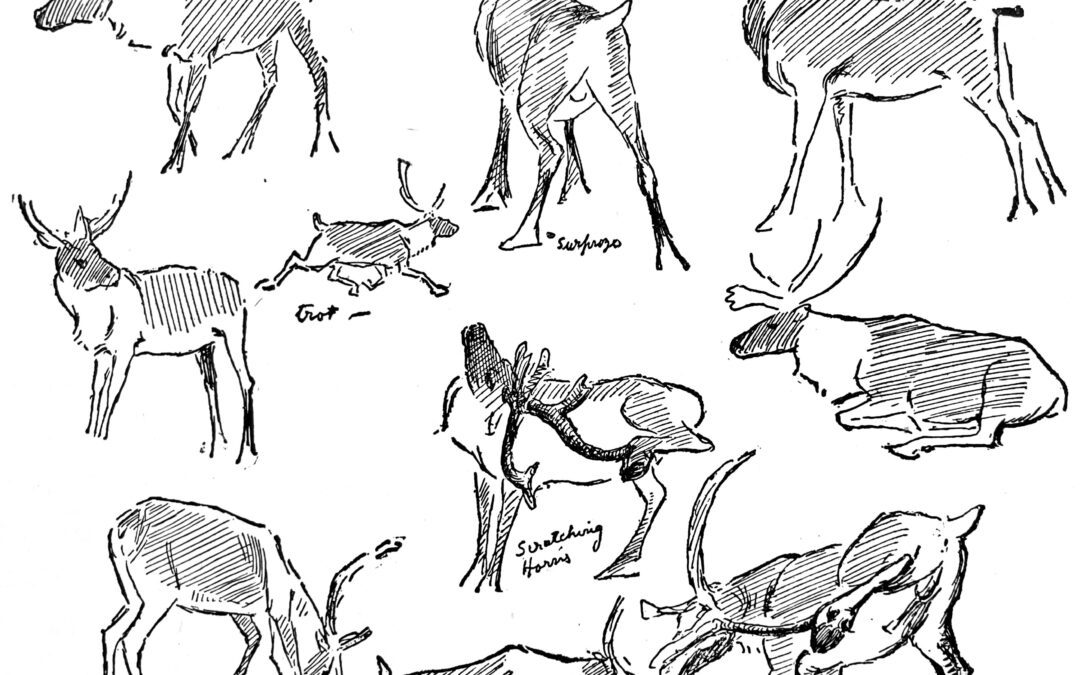Sketches of Norway Reindeer by Ernest Thompson Seton
Warm Winters, Warmer Summers
This is one in an ongoing series of nature essays from Lives of Game Animals (1925-1928) by Ernest Thompson Seton. By the time of Seton’s 1907 trip to the Arctic Prairies (Northwest Territories) total numbers of Caribou had significantly fallen from pre-European times. He nonetheless saw many of these fascinating creatures.
On my trip to the western Arctic in 2015—the same area visited by Seton decades earlier—I saw none. Arctic herd numbers are collapsing due to the fast warming of that region. In some places, at certain times, rain has replaced snow. The lichen eating Caribou can dig through snow to get their dinner but when rain turns to ice the poor animals cannot get through that ice to reach their food.
The Joy of Wild Life/Vol III pg. 134-135
“As I gather these chapters, setting forth the Lives of America’s Big Game, the chronicle looms up ever stronger as one long, shameful record, red with blood, and black with crime. For each kind, I find the same bright story at the beginning; and for each and all – or all but one or two – a nauseating finish.
“Our people came, they found an earthly Eden-land teeming with big, splendid, wild animals; and proceeded to slaughter them with irresistible weapons, for no purpose other than the brutal joy of seeing them fall. The only reason why they did not use shrapnel, aeroplanes and poison gas in the fell work, was because they did not have them.
So the wilds have been desolated; and all our herds of game so nearly gone that it gives one a thrill of unexpected joy to know that on this list there is a bright exception to the bloody rule. The Northern herds of Caribou, are still found in their millions.
“To see with my own eyes this glad wonder, was the lure that took me on that long, silent trip of 2,000 river miles. I saw them – not the millions in migration indeed. But they are surely there; for I saw the scattered summer herds each day, and all day long. And I find the deep and blessed satisfaction that it gave, set forth in my greasy, blotted Artic journal of this time, in oft-recurring phrases such as this:
“‘There never is a day, and rarely an hour of each day, that we do not see several Caribou. Yet I never fail to get a sense of joy at each and every one that comes. “There’s a Caribou,” one says with perennial intensity that is evidence of the perennial pleasure in the view. There never is one sighted – and we have seen thousands all told – that does not give me a happy little thrill, the thought, “This is what I came for. I am thankful that they still live, and that I am here to see them.’”

